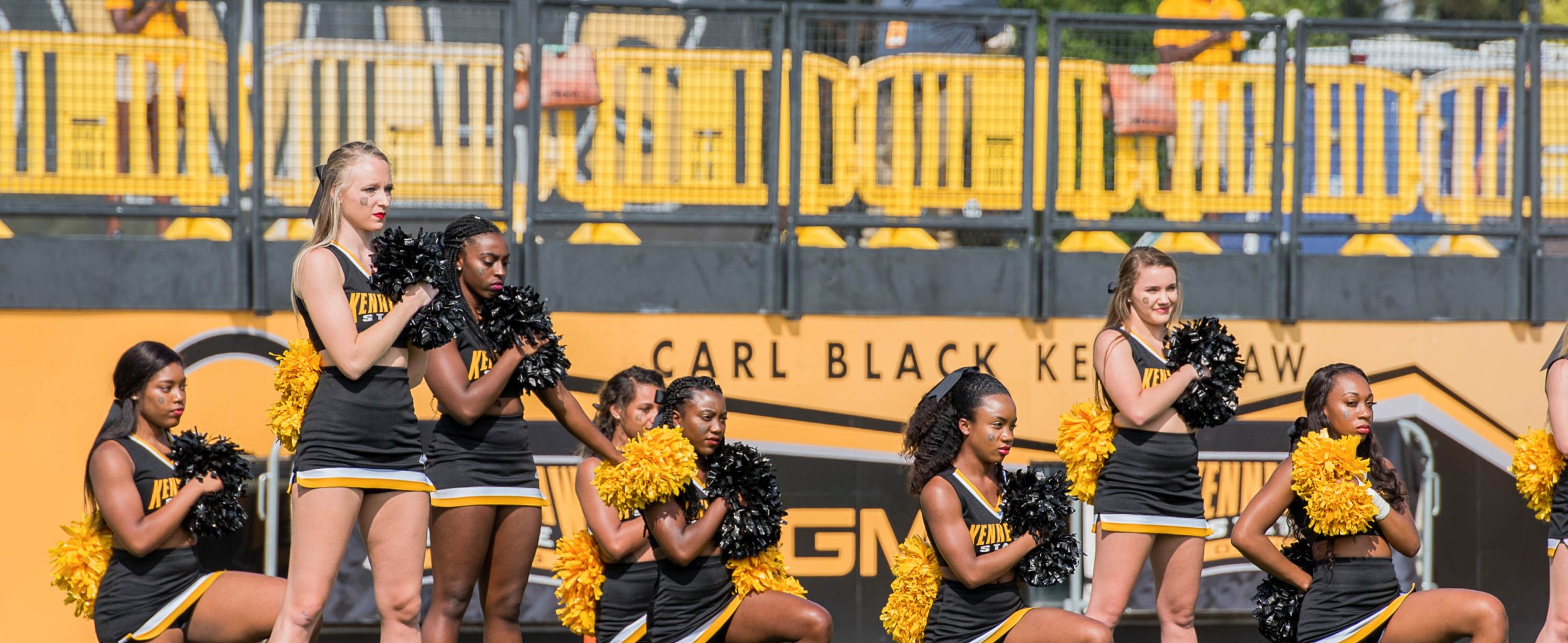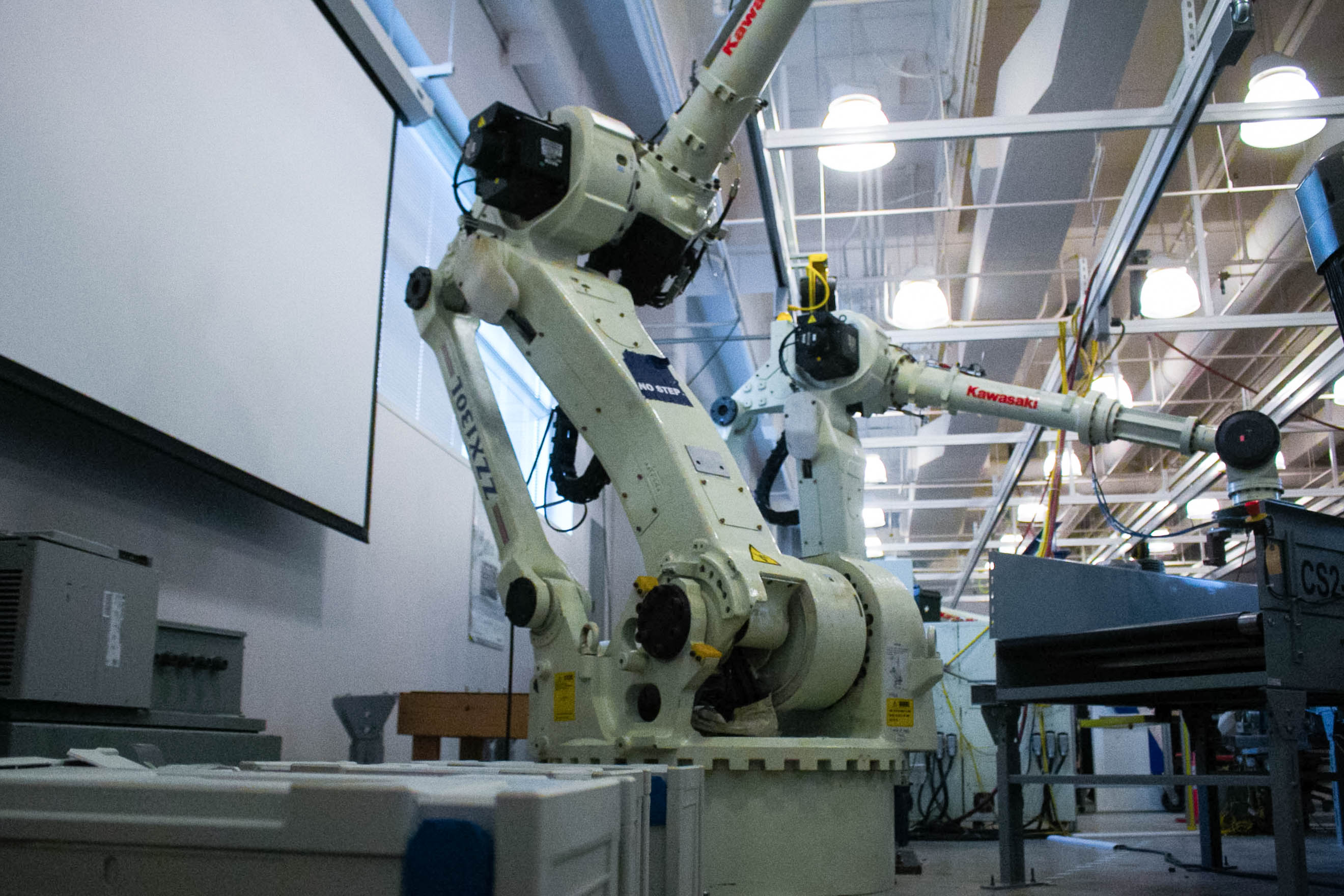Blue at the Z gave Kennesaw State University students the opportunity to try their hand at custom dyeing fabric in the front lawn of the Bernard A. Zuckerman Museum of Art on Wednesday, Oct. 7.
The six-hour event was first held last year as “Blue on the Green” in conjunction with an indigo artist exhibition that took place shortly after the museum’s opening in March 2014. The campus-wide experience is now in its second year, and, according to KSU Education Outreach Director Katy Malone, it is just as popular as ever.
“Last year we had about 600 students, and I would say that this is…about the same. It’s been steady all day,” Malone said about four and a half hours into the event. “I would expect to have another 600, if not more.”
The event featured resident artist Lynn Pollard, who was on site with vats of indigo dye and a welcoming smile. She assisted students as they dipped their shirts, scarves, dresses, socks and other natural materials into the dye, helped them add unique patterns and designs and chatted a little about her experiences as an artist.
“I started out as a weaver in the late ‘70s. Then in the late ‘80s I went back to Georgia Tech [and] got a degree in textile engineering. About the time I graduated, the industry was really not doing a lot anymore–you know, a lot of things had gone overseas, so I just continued on as an artist,” Pollard explained.
Today, Pollard considers herself a full-time textile artist, but she also supports herself by working a part-time job at a family company, Pollard Lumber Company. When asked what she values most about being an artist, Pollard said, “I think I’m just totally compelled to make. I just can’t imagine not making. So it’s that compulsion to create something.”
Pollard’s personal website, broadwovens.com, discusses the significance of indigo dyeing. According to her site, the dye’s variability has led to it being used for everything from rites, rituals, superstitions, fiercely defended secrets, and even allegations of black magic. She also speaks of its beauty, depth and complexity, as well as her efforts to create grace, serenity and refuge with her work.
Blue on the Z allowed students to immerse themselves in more than just the art of indigo dyeing. The event also offered music, refreshments and time for students to explore the museum and its exhibitions.
“It’s fun for the community, it’s fun for the students,” says Malone. “I love how lively it makes our space. It really gives us a vibrant atmosphere and that’s how museums should be. They should be a living, breathing part of the community, and it’s nice having students of all different…parts of the university. It’s nice just bringing everybody together.”
Representatives of the KSU Print Club were also a featured element of the event, as they provided “mystery print,” or white-on-white, shirts for students to dye. The KSU Print Club works closely with the KSU School of Art and Design and provides students interested in print-making with the chance to fundraise, visit exhibitions, organize field trips, interact with the museum, print materials to sell and engage with the community.
Valerie Dibble, professor of art and faculty advisor for the KSU Print Club, points out that events such as Blue on the Z also provide students with the chance to work with a professional visiting artist, meet other students and promote their work.
“It’s a nice real-life experience,” she said. “It’s really a wonderful engagement. We love community engagement. They hear about us, we hear about them—and the visiting artist aspect is always great.”
“I just hope that we can continue to do these things, so the KSU campus really sees this is their museum. We’re their museum. We feel like it’s special for them to have it on campus, so we hope they take advantage of it,” Malone concluded.
The Zuckerman Museum of Art’s mission is to present significant works from the university’s permanent art collection and regularly exhibit contemporary works of various media by locally and nationally recognized artists.
The museum is located on KSU’s main campus at 492 Prillaman Way, and is open Tuesday through Saturday from 10 a.m. to 5 p.m. and Sunday from noon to 5 p.m. Admission is free.


